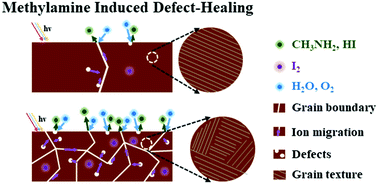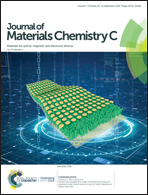Methylamine-induced defect-healing and cationic substitution: a new method for low-defect perovskite thin films and solar cells
Abstract
The power conversion efficiency of perovskite solar cells has been recently increased from 3.81% to 24.2%, yet it still lags behind the Shockley–Queisser limit with an ideal value of 33%. It has been widely recognized that the effective defect passivation of perovskite films is crucial for further boost in the efficiency. Herein, we systematically summarized and reviewed the development, recent advances, and commercial applications of the methylamine (CH3NH2, MA)-induced defect-healing (MIDH) method, from the view of defect passivation and moisture stability. MA gas can recrystallize perovskites and form dense films with higher crystallinity and fewer defects, which can improve the carrier lifetime, carrier diffusion length, and moisture stability. Moreover, this MIDH technique has been successfully implemented in scalable perovskite module deposition process and recycling process, thus enabling the large scale fabrication of high quality perovskite films with lower trap state density. Lastly, the perspective of this promising technique and some remaining open questions about the future scale up of the manufacturing process for obtaining high quality perovskite thin films and related optoelectronics devices are proposed.

- This article is part of the themed collection: Recent Review Articles


 Please wait while we load your content...
Please wait while we load your content...